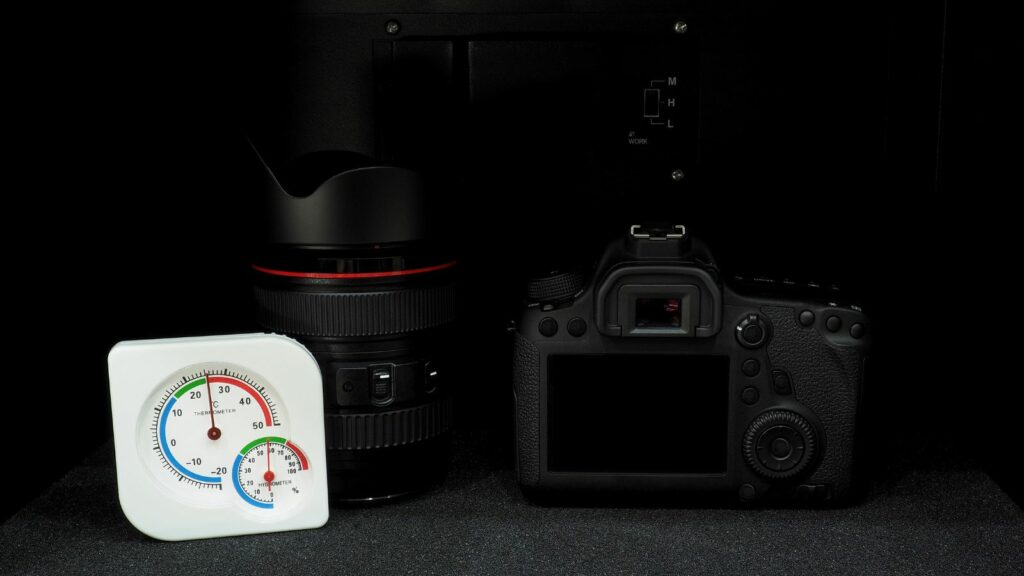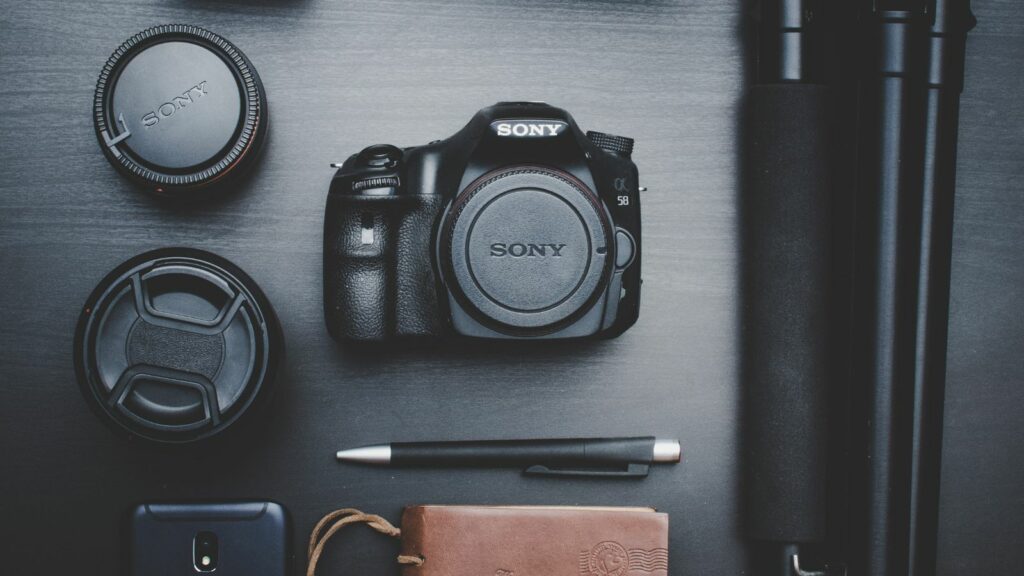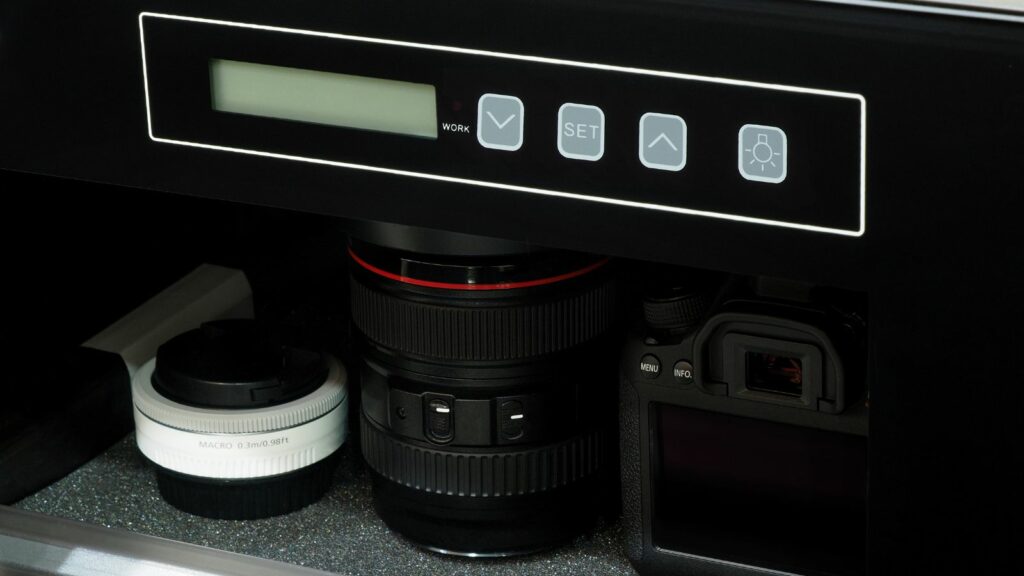As a photography enthusiast, you’ve likely amassed an impressive collection of camera gear. But how often do you think about where and how you’re storing it? Proper storage isn’t just about organization; it’s also about preserving the lifespan and quality of your expensive equipment.
Camera Gear Storage
Grasping the essence of camera gear storage allows photographers of all levels to maintain their equipment expertly. With a clear understanding, pricey equipment can stand the test of time while staying organized and ready for instant use.

Photography equipment represents a significant investment, with professional-grade gear often reaching thousands of dollars. Preserving this valuable equipment requires proper storage. Only through careful storage can a photographer safeguard these investments from dust, moisture, and accidental damage. For example, a high-quality camera case with padded compartments not only shields the camera and its lenses from physical damage but also keeps the delicate electrical components safe from environmental elements.
Beyond mere protection, proper storage plays a crucial role in the organization of gear. As with any professional toolkit, ease of access and efficiency play enormous parts in the workflow. Arranging camera gear logically within a storage unit – such as a camera bag or organized camera cupboard – boosts workflows massively. Here, identifying the camera gear by means of labels can significantly cut down on time spent searching for the right lens or battery pack. Thus, by investing some time in organizing equipment properly, photographers can stay focused on shooting rather than rummaging through bags.
Tips for Maximizing Your Camera Gear Storage
Balancing Storage and Accessibility
Striking a balance between secure storage and easy accessibility proves pivotal for photographers. Proper storage ensures protection for the gear, considering elements like padding and sealing against moisture. However, this doesn’t mean compromising on accessibility. Fast access to gear becomes crucial during a shoot, saving photographers the hassle of digging through a bag or case for the right piece of equipment.

Design traits such as external pockets and quick release mechanisms come into play. External pockets allow storage of smaller, frequently used items, granting immediate access without needing to open the entire bag or case. Quick release mechanisms, especially in straps and buckles, add ease in accessing stored equipment without fumbling with complex latches or zippers.
Consider camera gear storage options like a backpack or rolling case with compartmentalized interiors and quick-release straps. Backpacks offer hands-free portability, while rolling cases prove ideal when handling more substantial equipment load.
Customizing Storage Units for Unique Gear
The individual needs and types of photography equipment necessitate custom storage solutions. Formal camera storage products often feature adjustable compartments, enabling photographers to tailor fit each section according to their gear specifications.

For instance, large zoom lenses need more room than small prime lenses. Similarly, drone photography requires unique compartments for the drone itself, controllers, and batteries.
Upgrade camera bags and cases by adding lens wraps or padded dividers. These additions enhance protection and customization opportunities, accommodating a broader range of equipment sizes and types. Custom foam inserts may also be an option, especially for storing uniquely shaped equipment or photographic accessories beyond standard camera bodies and lenses.
Moreover, gear collections evolve over time, and having customizable storage allows photographers to modify their storage solutions as the needs change. Such flexibility reduces the risk of damage from gear moving within a bag or case, maintaining the value and longevity of the equipment.
Implementing Best Practices
Having the right camera gear storage isn’t just about keeping things tidy. It’s a vital aspect of maintaining the quality and longevity of your equipment. Whether you’re a professional photographer or a hobbyist, understanding and implementing best storage practices can save you time, prevent damage, and extend the life of your gear. From selecting a high-quality case with padded compartments to logically arranging your equipment and using labels, you’re not just organizing – you’re preserving an investment. Remember, comfort and convenience matter too. A well-chosen storage solution balances secure protection with quick access, enhancing your workflow efficiency.



